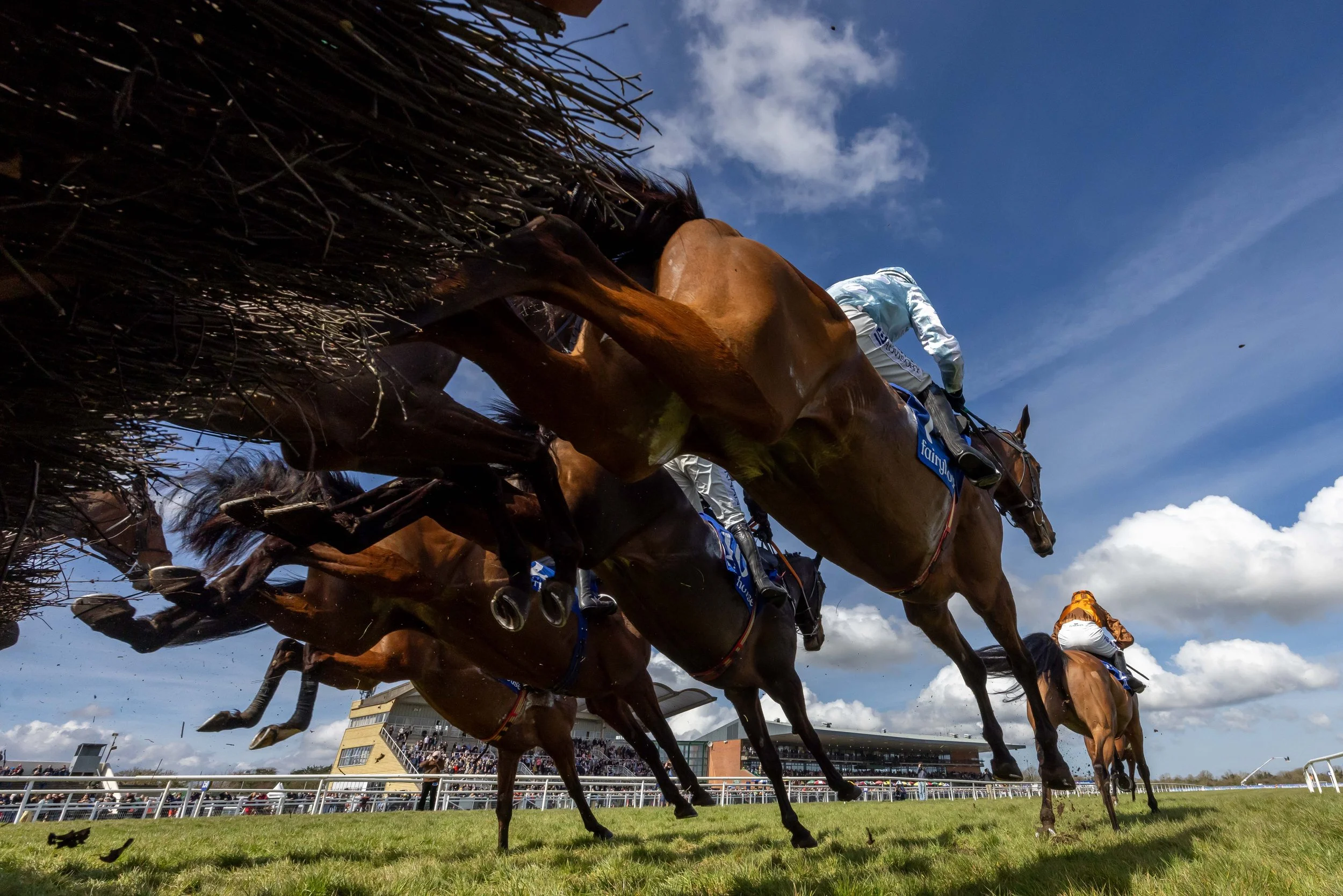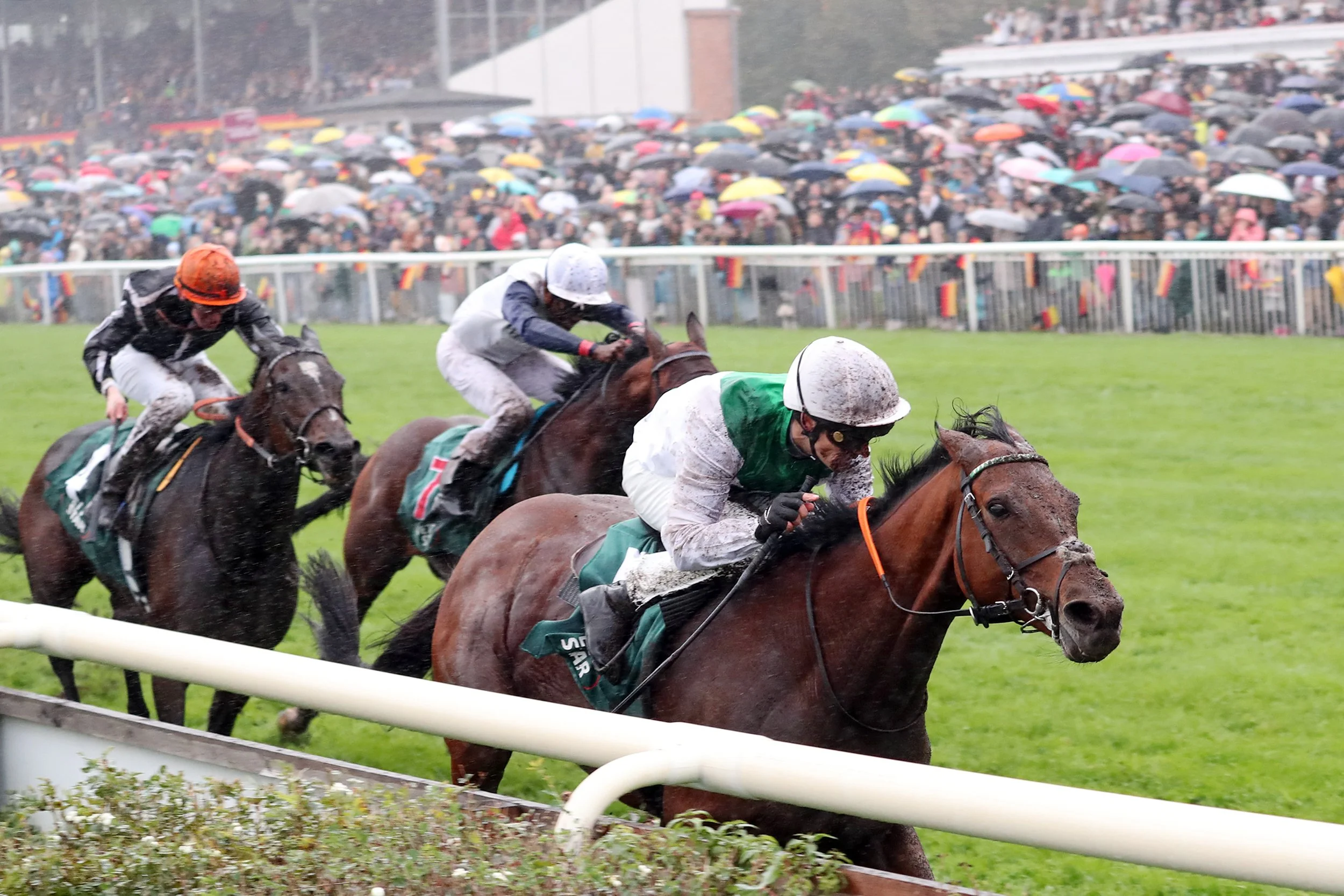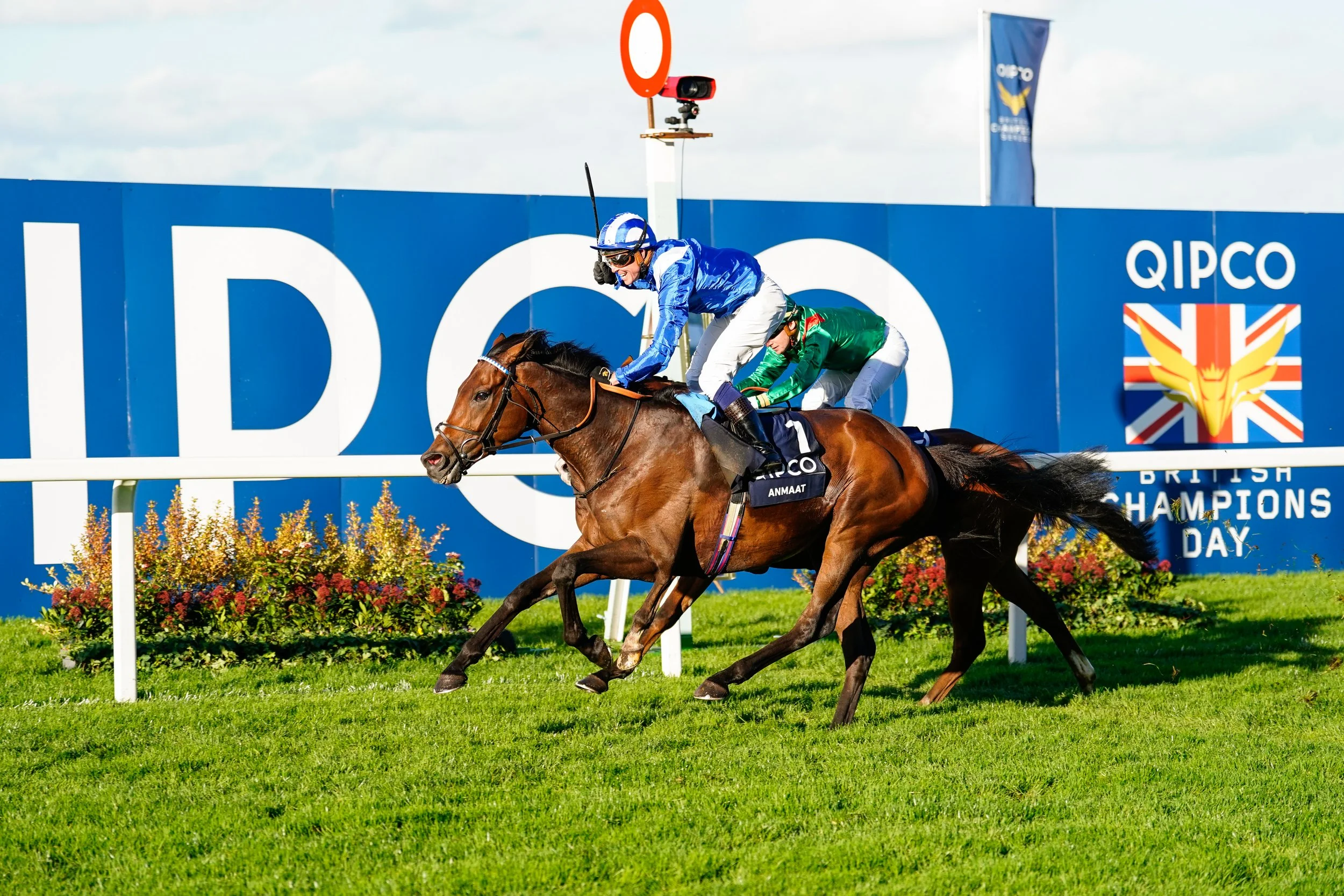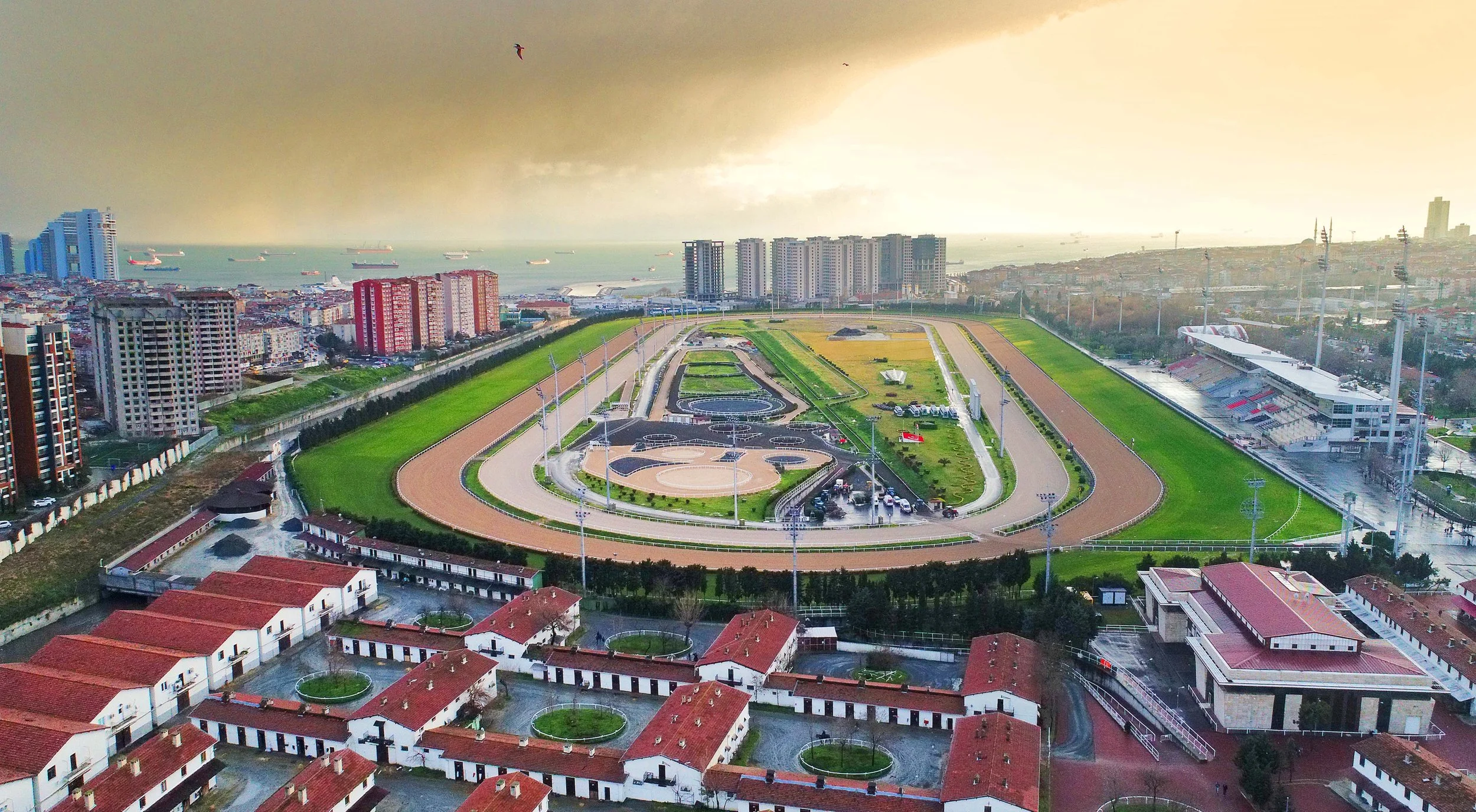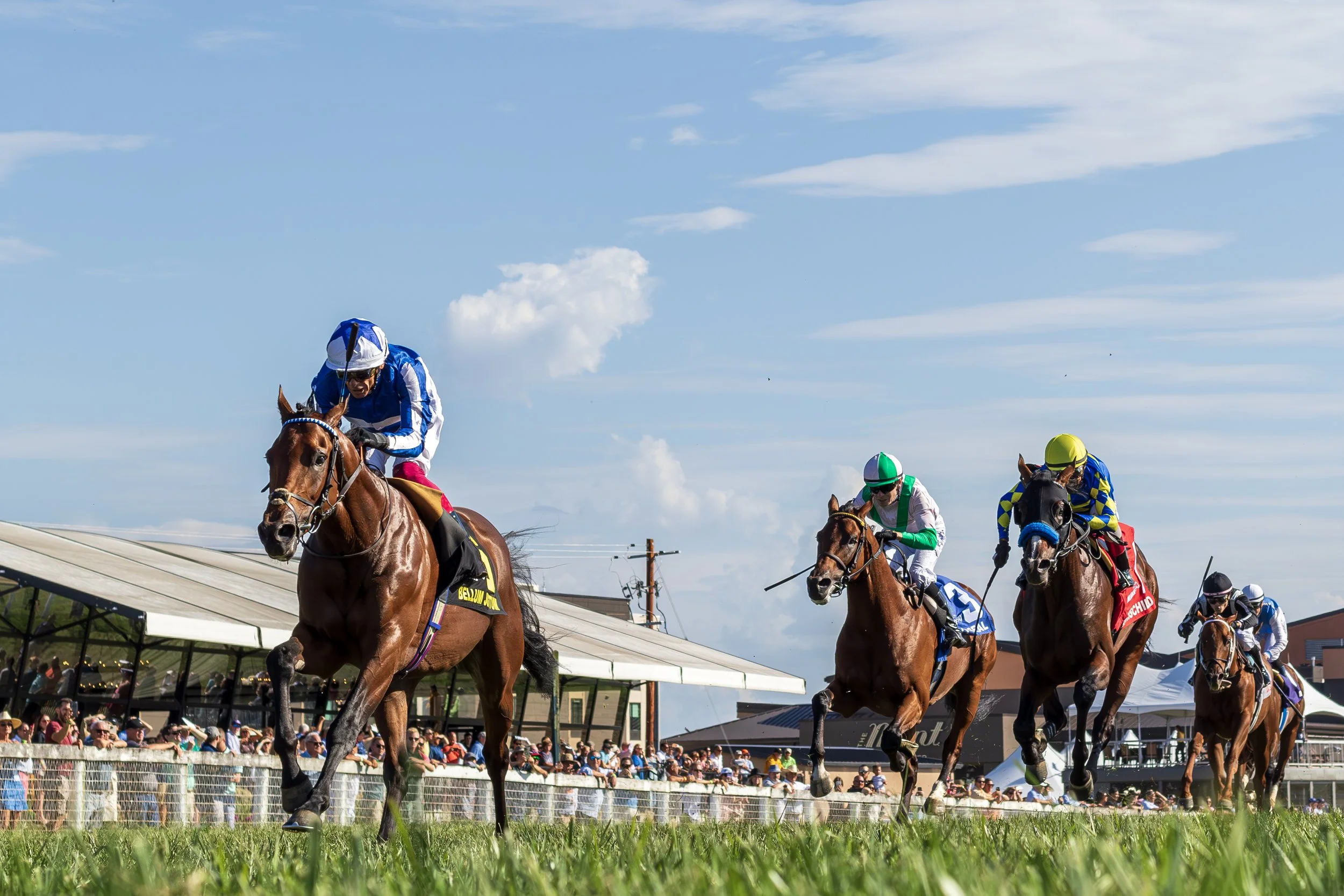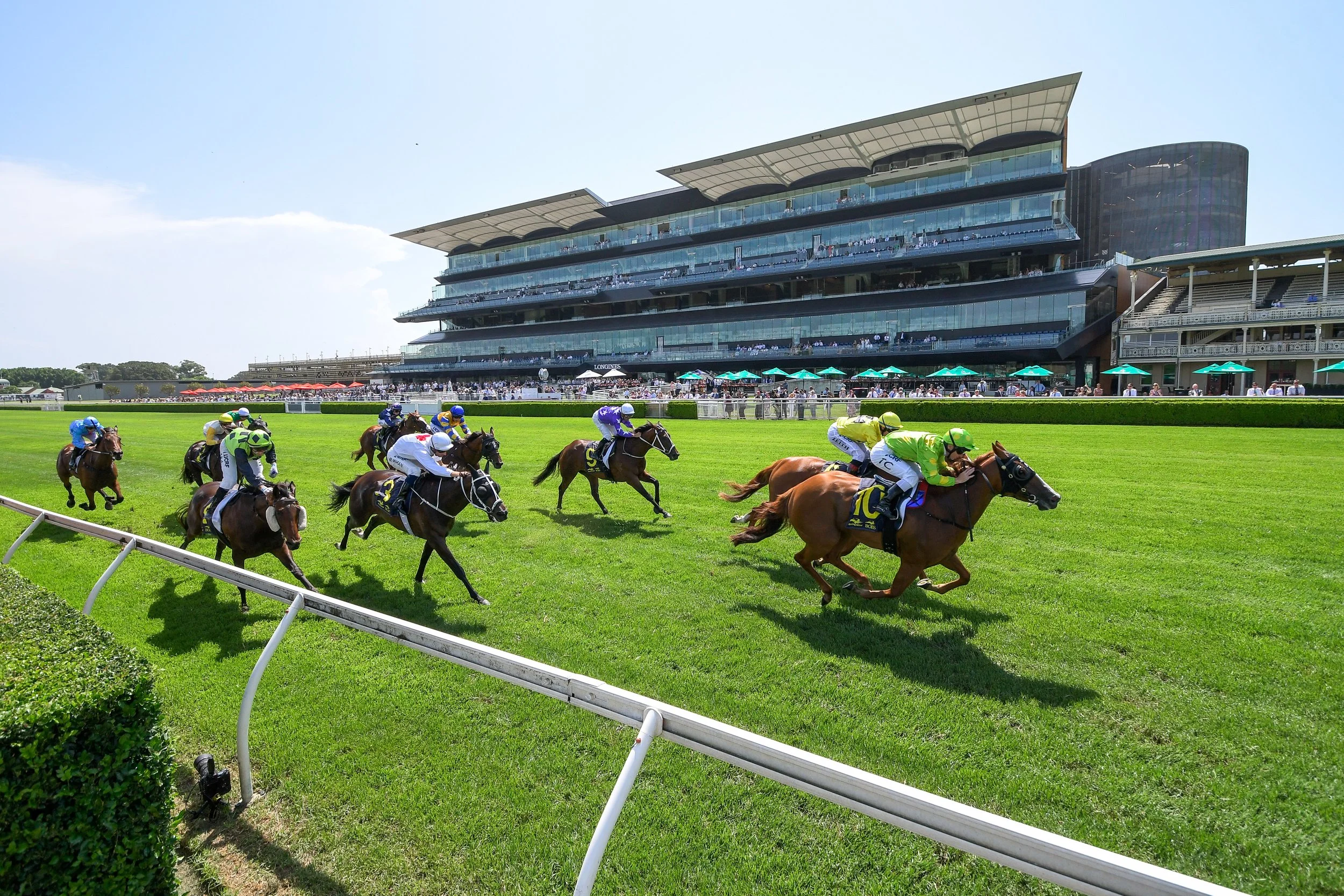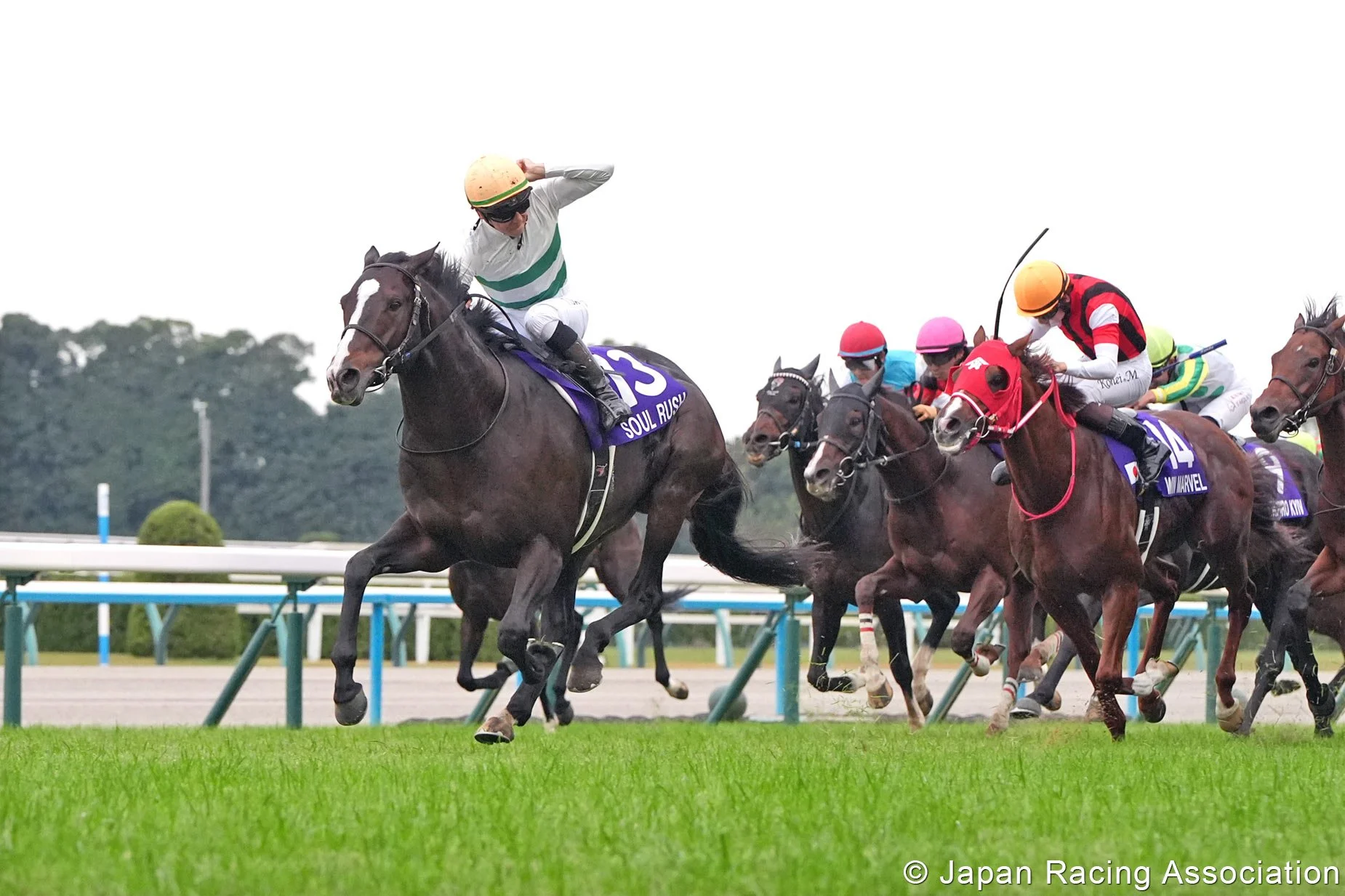Have Horse Will Travel - the international racing opportunities that trainers should be targeting this autumn
Ireland
The Irish Champions Festival takes place at Leopardstown and the Curragh 13th and 14th September respectively. The Curragh boasts the richest day of its year, with a card worth over €2.5m (£2.10m) in total. The highlights are the €600,000 (£503,865) Gp.1 Irish St Leger for three-year-olds and up, the Gp.1 Moyglare Stud Stakes and Gp.1 Vincent O’Brien National Stakes for juveniles and Gp.1 sprint The Flying Five Stakes, each worth €400,000 (£335,900).
The €200,000 (£168,000) Gp.2 Blandford Stakes, the €250,000 (£210,000) Tattersalls Ireland Super Auction Sale Stakes and two Premier Handicaps each worth €150,000 (£126,000) complete the card.
On the opening day at Leopardstown, the nine-race card features five Group races, including the €1.25m (£1.05m) Gp.1 Irish Champion Stakes 2000m (10f), the €400,000 (£335,900) Gp.1 Matron Stakes, €200,000 (£168,000) Gp.2 Solonaway Stakes, €150,000 (£126,000) Juvenile Stakes, €100,000 (£84,000) Gp.3 Tonybet Stakes, the €100,000 (£84,000) Ingabelle Stakes and two Premier Handicaps each carrying €150,000 (£126,000).
In addition to the Irish Champions Festival, the Autumn Racing Weekend will be held at the Curragh 27th and 28th September, which includes the 1400m (7f) €1m (£850,000) Goffs Million, the richest race for two-year-olds in Europe, and the richest handicap in Europe the 3200m (16f) Irish Cesarewitch, worth €500,000 (£425,000). The meeting will also include the Gp.2 Beresford Stakes (€120,000/£101,700) 1600m (8f) for juveniles, celebrating its 150th anniversary, 1200m (6f) Gp.3 Renaissance Stakes (€60,000/£50,800), and 1400m (7f) Gp.3 Weld Park Stakes (€60,000/£50,800).
Irish jumps series
For National Hunt runners, a series of seven 3300m (2m1f) 10-hurdle Irish Stallion Farms EBF Academy Hurdle races will be run in Ireland from October to December. The first is at Cork on 12th October, followed by Fairyhouse 4th October, Punchestown 13th November, Cork 23rd November, Navan 6th December, Naas 15th December and concluding at Leopardstown 29th December.
The races are open to three-year-olds which have not had any previous run under either Rules of Racing or I.N.H.S. Rules other than in Academy Hurdle races. Horses that run in any of the seven races can continue their careers in bumpers, maiden hurdles or Point-to-Points.
Jonathan Mullin, Director of Racing at HRI, explains, “Each of the races offer a Sales Voucher, similar to the IRE incentive for the owners of any eligible Irish-bred horse which wins or is placed either second or third. Each winning owner will receive a €5,000 voucher while the owners of the runner-up and the third-placed horses will each receive €3,000 and €2,000 respectively.”
Additionally, all seven races are part of the Weatherbys National Hunt Fillies Bonus Scheme, so three-year-old Irish-bred fillies that win an Irish EBF Academy Hurdle in 2025 will be awarded an additional €7,500 bonus on top of the race prize money and will still be eligible for the €5,000 scheme bonuses available if subsequently winning a bumper or a steeplechase, but not a maiden hurdle.
Germany
This season, Deutscher Galopp introduced 12 premium handicaps and 15 Premium Racedays, which included seven Group 1 racedays, guaranteeing at least €15,000 (£12,500) in handicaps and maiden races on those days.
The BBAG Auktionsrennen at Mülheim 4th October is worth €52,000 (£43,600), run over 2000m (10f) for three-year-olds offered as yearlings at the 2023 BBAG Sale, while at Krefeld 15th October is the €55,000 (£46,000) Gp.3 Herzog Von Ratibor-Rennen for two-year-olds, over 1700m (8.5f).
The Berlin-Hoppegarten card 3rd October is one of the Premium Racedays and as well as including the 2000m (10f) Gp.3 Preis Der Deutschen Einheit, €55,000 (£46,000) for three-year-olds and up, there is also a 1400m (7f) BBAG Auktionsrennen for three-year-olds offered as yearlings at the 2023 BBAG Sale, and a support card of seven other races from €15,000 (£12,500) to €22,000 (£18,500). Similarly, 19th October at Baden-Baden sees a nine-race card with the guaranteed minimum that also features the Gp.3 €155,000 (£130,000) Preis Der Winterkönigin for two-year-olds over 1600m (8f), and the Gp.3 Herbst Trophy €55,000 (£46,000) over 2400m (12f) for three-year-olds and up.
The 26th October Hannover Premium card includes the €55,000 (£46,000) Gp.3 Herbst-Stutenpreis over 2200m (11f) for three-year-olds and up and two €25,000 (£21,000) juvenile races over 2000m (10f) and, for fillies only, 1400m (7f). The Premium Racedays conclude at Munich 8th November, where the feature is the Gp.1 Grosser Allianz Preis Von Bayern over 2400m (12f) worth €155,000 (£130,000), and another €52,000 (£43,600) BBAG Auktionsrennen, this time for two-year-olds over 1600m (8f) offered as yearlings at the 2034 BBAG Sale.
Sweden
Sweden’s showcase takes place at Bro Park 12th September with a card that includes the Gp.3 Stockholm Cup International (Gp. 3) over 2400m (12f) for three-year-olds and up and worth SEK 1,000,000 (€91,700 / £76,900). The three Listed races on the support card are each worth SEK 550,000 (€50,500 / £42,350) and open to three-year-olds and up, namely the Bro Park Sprint Championship 1200m (6f), the Tattersalls Nickes Minneslöpning 1600m (8f) and the Lanwades Stud Stakes for fillies 1600m (8f).
Later Listed opportunities for three-year-olds up, each worth SEK 400,000 (€36,700 / £30,800), are the 2400m (12f) Skånska Fältrittklubbens Jubileumslöpning and the Peas and Carrots Mile over 1600m (8f) at Jägersro Galopp 5th October, and the 2100m (10.5f) Songline Classic at Bro Park 26th October.
Spain
The highlight of the Spanish season is Champions Day 19th October in Madrid, with a card that includes the Gran Premio Memorial Duque de Toledo over 2400m (12f) for three-year-olds and up, with a value of €50,000 (£42,000) and the Gran Premio Ruban over 1200m (6f) worth €40,000 (£33,500). The €40,000 (£33,500) Gran Criterium for two-year-olds is run over 1600m (8f) 26th October.
British Champions Day
Opening a card that features the British Champions Long Distance Cup (€590,000/£500,000), the British Champions Sprint Stakes ((€590,000/£500,000), the British Champions Fillies and Mares Stakes ((€590,000/£500,000), the Queen Elizabeth II Stakes (€1.36m/£1.15m), the Champion Stakes (€1.53m/£1.3m) and the 1600m (8f) Balmoral Handicap (€295,000/£250,000) is the newly-introduced Two-Year-Olds Conditions Race, worth €295,000 (£250,000), taking the total prize money on the day to €5.13m (£4.35m). Open to two-year-olds, the 1200m (6f) conditions race, like all races at this distance at Ascot, will be run over the straight course.
Turkey
The Jockey Club of Türkiye hosts seven international races in Istanbul at Veliefendi Racetrack, as part of the International Racing Festival run on the first weekend in September. The highlights are the €62,650 (£53,400) 2000m (10f) Gp.2 Anatolia Trophy for three-year-olds up, €190,000 (£162,000) Gp.2 1600m (8f) Topkapi Trophy for three-year-olds up, the €98,700 (£84,150) Gp.3 1200m (6f) Queen Elizabeth II Cup for two-year-olds, €197,500 (£168,400) Gp.3 2400m (12f) Bosphorus Cup for three-year-olds up and the Gp.3 1600m (8f) €142,400 (£121,400) Istanbul Trophy, entries closing 6th August. There is a transport subsidy for international races, $18,000 for round-trip per horse arriving from the continents of America (North and South), Oceania, Africa and Far East countries, €12,000 for round trip per horse arriving from Europe and United Arab Emirates. Any horses scratched from the race after arrival by veterinary report will still receive transportation subsidy. The Gp.3 Malazgirt Trophy for purebred Arabians over 1600m (8f) will also be part of the card.
USA
Kentucky Downs is home to America's only European-style 2000m (10f) all turf racecourse, hosting just seven days racing from 28th August to 10th September, entries closing from 16th August, when emailed expressions of interest must also have arrived for the invitationals. The feature races are the $3.5m (€3m/£2.6m) Gr.3 Nashville Derby Invitational over 2400m (12f) for three-year-olds, the $2.5m (€2.19m/£1.86m) Gr.3 1600m (8f) Mint Millions Invitational and the 2400m (12f) Gr.2 Kentucky Turf Cup Invitational of the same value which is also a "Win and You're In Breeders' Cup Turf" race. Both races are for three-year-olds and up.
Carrying $2m (€1.75m/£1.48m) each are the Gr.3 Kentucky Downs Ladies Turf for fillies and mares three-year-olds and up over 1600m (8f), the Gr.2 Kentucky Downs Ladies Turf Sprint 1200m (6f) for fillies and mares three-year-olds and up, the Gr.1 1200m (6f) Franklin-Simpson Stakes for three-year-olds, the Listed 1600m (8f) Gun Runner for three-year-olds, the Gr.2 1200m (6f) Music City Stakes for three-year-old fillies, the Gr.3 2000m (10f) Kentucky Downs Ladies Marathon Invitational for three-year-olds and up fillies and mares, the Gr.3 2000m (10f) Dueling Grounds Oaks Invitational three-year-old fillies, and the Gr.2 Kentucky Downs Turf Sprint 1200m (6f) for three-year-olds and up which is another of the "Win and You're In Breeders' Cup Turf Sprint Division” races.
Each carrying purses of $1m (€870,000/£738,000) are the Bowling Green Gold Cup Invitational 3200m (16f) for three-year-olds up, the 1600m (8f) Listed Kentucky Downs Juvenile Fillies, the 1200m (6f) Listed Kentucky Downs Juvenile Sprint, the 1600m (8f) Listed Kentucky Downs Juvenile Mile, and the 1200m (6f) Untapable Stakes for two-year-old fillies. The Listed Tapit Stakes over 1600m (8f) for three-year-olds up heads three races worth $500,000 (€437,000/£370,000), alongside the 1600m (8f) NTL Tight Spot Overnight Handicap for three-year-olds up, and the 1600m (8f) Listed One Dreamer for fillies and mares three-year-olds up. Maiden races, already the richest in the world, carry €181,000 (€158,000/£133,300) per race.
“We want to build the Nashville Derby into a race that American and European horsemen alike point to and buy horses for,” says Ron Winchell, co-managing partner of Kentucky Downs with Marc Falcone. “We’ve positioned the Nashville Derby so that it fits into a big-money circuit for three-year-old turf horses.”
The 42nd running of the Breeders’ Cup will be held for a fourth time in Del Mar, California, on the edge of the Pacific Ocean in San Diego “where the turf meets the surf”. Consisting of 14 Grade 1 races with purses and awards totalling more than $31m (€27.11m/£22.97m), the meeting takes place Friday 31 October and Saturday 1st November.
“Our return to Del Mar in back-to-back years marks the continuation of a wonderful collaboration and successful partnership, both with our friends at the track and with the greater San Diego area,” says Drew Fleming, President and CEO of Breeders’ Cup Limited. “We look forward to once again gathering where the turf meets the surf as the world’s best thoroughbreds put on an incredible show.”
“We couldn’t be more excited about hosting back-to-back Breeders’ Cup World Championships and welcoming the very best in international racing back to the town of Del Mar and the greater San Diego area,” said Joe Harper, CEO of the Del Mar Thoroughbred Club. “The Breeders’ Cup represents the pinnacle in world-class racing and the organisation’s willingness to return here again is a testament to the quality of our racing facilities, our idyllic weather, and the warm hospitality shown to our visitors by the local community.”
With 14 championship races held over two days, Future Stars Friday sees the two-year-old championships run for purses upwards of €931,130 (£783,500) and €1.9m (£1.6m). Saturday boasts nine races, culminating with the €6.5m (£5.5m) Gr1 Breeders’ Cup Classic. The “win and you’re in” series consists of 69 of the best races from around the world, from June to October, awarding each winner an automatic and free entry into the Breeders' Cup World Championships.
Bahrain
The Bahrain Turf Series is fairly new to the calendar and has seen just five renewals to date. Running from December through to February, each race carries prize money from €73,750 (£62,850) up to €91,880 (£78,200) with total and the series is designed to attract international runners rated 85-100 to compete against local Bahrain-based horses.
“We believe the time is right to build on the success of the Bahrain Turf Series and expand the international programme to incorporate our season’s premier races,” explains His Highness Shaikh Isa Bin Salman Bin Hamad Al Khalifa, Chairman of the Bahrain Turf Club. “Our most prestigious races, including the Crown Prince’s Cup and the King’s Cup, fall within the Bahrain Turf Series calendar, and are intended to make racing in Bahrain an even more attractive and compelling proposition for international visitors.”
In total, the Series of sprint and middle-distance races comprises of 12 races, six in each division, with each race carrying bonus prizes for the horses accumulating most points in their respective division.
At time of going to press the dates and 2025/26 prize monies were not available, but last year saw significant increases. In December are two 1000m (5f) and two 2000m (10f) races for horses rated 84-100 and a 1200m (6f) and 2000m (10f) race for those rated 80-100.
In January there are two conditions races, over 1000m (5f) and 1800m (9f). February, when the season concludes, sees opportunities for horses rated 80-100 at 1000m (5f), 1200m (6f), 1800m (9f) and 2000m (10f). For those seeking black type, the 2000m (10f) Gr2 Bahrain International Trophy in November for three-year-olds and up is establishing Bahrain as a premier horseracing destination. Run on turf, in 2024 the race was worth €921,858 (£785,315) in total, with €553,115 (£471,178) to the winner.
Entries close 2nd October with supplementary entry stages later in October, but there are three 'Automatic Invitation' races, for the first, second and third from The Royal Bahrain Irish Champions Stakes and the Gp.3 Strensall Stakes at York. The Bahrain Turf Club will provide air tickets for overseas connections and hotel accommodation on a room only basis. Shipment of invited horses will be arranged and paid for by the Bahrain Turf Club.
Australia
The Melbourne Cup Carnival needs no introduction and the Cup itself is only one of 10 Gp.1 racedays during the 22-day season at Flemington. The 3200m (16f) Gr1 Melbourne Cup will be worth A$8.66m (€4.93m / £4.14m) this year, with prize money down to 12th.
During the week there are three €1.8m (£1.6m) weight-for-age Gr1s, the 2000m (10f) Champion Stakes, 1600m (8f) Champions Mile and the 1200m (6f) Champions Sprint. “It is always a great thrill to host international connections who make the journey to Melbourne,” Leigh Jordon, the VRC Executive General Manager, tells us.
More recently the Sydney Everest Carnival held at Royal Randwick and Rosehill Gardens has competed for equal attention, running from 21st September to 9th November, and boasting the world’s richest race on turf, The Everest, over 1200m (6f) in mid-October at Royal Randwick and worth A$20m (€11.3m / £9.5m). The opening day at Royal Randwick features two weight-for-age races, each with a total prize of €615,840 (£520,265) for three-year-olds and up, The 7 Stakes 1600m (8f) and the Gp.2 1100m (5f) Shorts. Randwick later hosts the iconic 1600m (8f) Epsom Handicap, a Gp.1 worth €924,000 (£780,500) and on the Everest supporting card is the €3m (£2.6m) Gp.1 King Charles III Stakes over 1600m (8f).
At Rosehill Gardens, the Hill Stakes over 2000m (10f), and 1800m (9f) Five Diamonds each carry a purse of €1.2m (£1m), with the €6.2m (£5.2m) Golden Eagle over 1500m (7f) the showpiece in November.
Japan
The JRA offers travel incentives for particular overseas horses for Group 1 races and for invited overseas horses for the Japan Cup. The JRA provides air transport costs for the horse and two attendants, the owner, trainer, jockey, and their spouse/partner, and five nights’ accommodation at a JRA designated hotel.
All Japanese Gr.1s are free to enter, or by free invitation, and carry the same declaration fee of €20,200 (£17,500), with significant bonuses from first down to last for the participating winners of designated Gr.1 races globally. The 2400m (12f) Japan Cup is run at Tokyo in November for a purse of €7.3m (£6.3m), Also in November, at Kyoto, the 2200m (11f) Queen Elizabeth II Cup for fillies and mares carries a purse of €1.9m (£1.6m), and The Mile Championship is worth €2.7m (£2.3m). Run on dirt at Chukyo Racecourse, the 1800m (9f) Champions Cup has a total value of €1.7m (£1.5m).
EMHF Update
Article by Paull Khan
This summer, to coincide with the Italian Derby, Italy’s Ministry of Agriculture (MASAF) and its Institute of Culture organised an event in Rome celebrating the role of the thoroughbred in culture. EMHF Secretary-General, Paull Khan was asked to speak on ‘the role of the thoroughbred in the development of human society.’ The text of his talk is repeated here.
I would like to start by commending MASAF and the Institute of Culture for conceiving of and delivering this event today. Because, in many ways, these are troubled times for our sport globally: the number of thoroughbreds foaled has fallen significantly over recent years, from over 123,000 20 years ago to around 86,000 today; just this year, racing will cease in Singapore, Macau and Greece, and our very social licence to operate – alongside that of other sports and pastimes that make use of animals – is being brought increasingly into question.
So there is no better time to shine a spotlight, for a change, on the enormous benefits that the thoroughbred has brought to human society in the relatively short time since its creation in England in the late-1700’s.
I could look at the big picture – for example, the overall economic impact of racing (which we have calculated at no less than 21 billion Euros per annum across Europe alone) – but instead, in an attempt to convey the very varied contribution that thoroughbreds can make to society, and with the ten minutes I have available to me, I am going to take three examples: of thoroughbred racing, first as a symbol of renewal and normalcy after conflict, secondly as a focus for unity and peace and finally as an economic and charitable powerhouse.
For my first example, I look to Libya. You will all remember how Libya descended into turmoil and civil war after Col. Gaddafi’s overthrow in 2011. War was raging in Tripoli as recently as July 2021. However, despite the chaos and conflict that has wracked the country, horseracing has staged a remarkable recovery. Seemingly at the very first races were being organised again. I liken it sometimes to those desert flowers which, after years of inactivity, at the first opportunity, bloom again. Today, there are several tracks that have not only been re-opened, but are being renovated and modernised, and one brand new track is under construction. Government has supported the sport’s funding generously, and racegoers have turned out in high numbers. Despite there being no betting, horseracing is second only to football in terms of attendances, (as in Britain, where I live). I firmly believe the reason for all this is that racing is a symbol of normalcy, and is seen to be by enlightened administrations. The Libyan Horseracing Authority is adopting a particularly socially enlightened approach – it has established the Social Solidarity Cup, which might be the first race meeting in the world designed especially around those with disabilities, special needs and autism spectrum disorders.
Secondly, I turn to Lebanon. Lebanon is a country of great religious diversity - however, for 15 years, from 1975 to 1990, some of you will remember, it was wracked by civil war. A ‘green line’ developed in Beirut, separating the Christian East from the Muslim West. And smack, bang on that green line was the racecourse. Two years into the war, it was decided to re-establish racing. And when they did, at the first race meeting, 12,000 people defied the dangers and went to the races. From then, rather than the racecourse becoming a no-go area, it actually became the only place where, for several years, people from opposite sides of the green line could meet each other, united in their love of the sport of racing. It became a symbol of the hope of national unity and of peaceful Christian/Muslim coexistence.
There’s a wonderful short film, a German-made film, on Youtube, which describes it very well. It’s called ‘Stories from No Man’s Land’ and I urge you to watch it. At one point, there’s the story of a former fighter who was ordered by his boss, near the start of the war, to plant a bomb in the racecourse buildings. He went to check the place out – ‘do a reccy’. He’d never been racing before, never seen how people react at the finish of a race. And he says: “suddenly everyone got up, Muslims and Christians together, and started waving their arms around, and then sat down”.
“I was troubled” he says, “all I saw were simple people, Muslims and Christians joined together”. He refused to carry out his mission – no bomb was ever planted on the course.
For several years, racing continued for most of the time. At the President’s request, race meetings took place during the worst of the civil war fighting – when the racing was on, the shooting would subside – only to start again once the spectators had gone home.
Extraordinarily, there was never any trouble at the racetrack, and the course was even used as the venue for peace talks.
In 1982 the Israeli invasion completely destroyed the stands. But, after the war was over, they were quickly rebuilt in the 90’s and racing started up again – much like in my first example of Libya.
Just because the war was over, it didn’t mean the threats to the racecourse were over. The civil authorities wanted to capitalise on its prime location – right in the centre of Beirut - and use it for a new presidential palace. But there was a concerted and spirited campaign to save the track, which attracted great public support, I dare say because it had become part of the fabric of society, symbolic of humanity’s better nature.
And finally, to Hong Kong.
The richest Racing Authority on earth is the Hong Kong Jockey Club. It is a quite remarkable organisation. As you know, Hong Kong is tiny – you could fit five Hong Kongs into Rome. It has only two racecourses. But its Jockey Club employs nearly 20,000 people and is in the top ten charity donors, not only in Hong Kong itself, not only in Asia – but in the world. The Jockey Club is Hong Kong’s biggest taxpayer.
In round terms, there are 37bn Euros bet with the Hong Kong Jockey Club. They take a little under 15% of that and, of their cut, they then give three-quarters to the state. And that amounts to 3.3bn Euros in tax and nearly a further billion Euros in charitable donations.
So when it says on its website: “The Hong Kong Jockey Club is a world-class racing club that acts continuously for the betterment of our society”, you might think that’s just marketing speak. But it is not. In the last month alone, for example, they have been able to make these announcements:
Jockey Club donates HK$ 720 million to help low-income families in transitional housing become self-reliant and Jockey Club Expands to five districts the scheme bridging the poverty divide through holistic support for disadvantaged children and families
And what is at the core, at the heart, of this behemoth? It is the thoroughbred. Hong Kong is, I feel, a great example for the world’s Governments. Governments can choose to establish other ways of raising charitable funds through gambling – such as lotteries. And, more broadly, they can elect to put in place a legislative and taxation framework that favours other modes of gaming – roulette, slot machines, etc. But what none of these arid forms of gambling can do is what the thoroughbred does – support an extensive network of related jobs, which, in most jurisdictions around the globe, are primarily in rural areas; boost those rural economies and bring to society generally a point of cohesion, a sense of shared celebration, a recognition of continuing a great historical tradition. So, I say: “Governments: if you support horseracing with a benign legal and financial framework, our sport will repay you, and repay society, many times over”.
It was Kemal Ataturk, the towering Turkish leader of a century ago - still revered by many in Turkey to this day - who said:
“Horseracing is a social need for modern societies”.
‘A social need for modern societies’….. I believe he was right.
A BUSY SUMMER FOR THE EMHF
This summer saw a succession of EMHF events. Here is a quick summary.
General Assembly – Copenhagen, Denmark
Our General Assembly took place in Copenhagen in June. For the Federation this was a first – and highly successful – visit to Denmark. In recent years, EMHF annual meetings have evolved into mini conferences, rather than traditional general assemblies and delegates were treated to a wide range of presentations.
Horse Racing Ireland CEO, Suzanne Eade, kicked off a discussion on sustainability and what it means for racing authorities by explaining the approach being taken in Ireland, as part of the HRI’s broader strategy.
Di Arbuthnot, (Chair of the International Forum for the Aftercare of Racehorses) outlined IFAR’s new membership-based model, under which interested organisations and individuals can show their support for aftercare by becoming a member or a supporter of IFAR and then and Teodor Sheytanov (Secretary-General of the European Equestrian Federation) discussed ways in which the thoroughbred and equestrian world’s could align in aftercare efforts.
Paull Khan (EMHF Secretary-General) summarised the results of a survey of EMHF members on their experience and awareness of illegal betting, before Brant Dunshea, BHA Chief Regulatory Officer and a member of the Asian Racing Federation’s Council on Anti-Illegal Betting and Related Financial Crime, spelt out the concerning implications of its growth for European racing.
Darragh O’Loughlin (CEO of the Irish Horseracing Regulatory Board) gave a case study of collaboration between EMHF members, concerning a range of integrity initiatives.
The European Pony Racing Association had considered what those in charge of mainstream racing might do, in order that pony racing could best provide the stars of tomorrow. Paull Khan, as EPRA Chair, set out this ‘wish-list’.
Cathy McGlynn, (EMHF Political Advisor) summarised progress on the EU’s review of its animal welfare legislation and the continuing efforts of the EMHF’s Political & Legislative Committee in seeking to minimise the adverse unintended consequences of what is currently proposed.
Peter McNeile (Director of EMHF’s Official Ticketing Partner, Future Ticketing) explored recent advances in the ways in which racecourses are making use of customer data.
Finally, Paull Khan presented the results of the EMHF’s National Racing Survey, which were set out in the last issue of this magazine.
This was the third year of an arrangement whereby commercial organisations, relevant to racing in our region, are invited to join in the General Assembly and its social programme and, at their first attendance, make a short presentation to the delegates. What began with just three companies has expanded to 17 delegates from 12 companies. This year’s presentations - from European Horse Services, Steriline, Berlinger, Turftrax, Weatherbys and Cavago – underlined just how multi-faceted our industry is.
As last year, the General Assembly was followed by the EuroMed Stewards Conference, again organised by the British Horseracing Authority. Brant Dunshea chaired the gathering which, in just two years, has become a highly-valued event among the region’s Stewards and regulators.
And so it was that around 50 attendees were invited to the following day’s racing action. Klampenborg, on the northern outskirts of the capital, is one of European racing’s success stories. Bucking the general trend, attendances are buoyant and the demographic vibrant. It is perhaps only to be expected that the experience of racing at Denmark’s premier racecourse would be the very embodiment of its concept of hygge. With its architecturally pleasing stands, treed surroundings and proliferation of comfy chairs, it delivered a garden party atmosphere that will live long in the memory.
European Pony Racing Association Annual Meeting – Ascot, England
Following the first two annual meetings, in Budapest and Chantilly, the EPRA Annual Meeting swung into Ascot in July. Britain’s Pony Racing Authority (PRA) kindly hosted us in Ascot’s Berystede Hotel. As well as representatives from several European countries, we also welcomed - in a nod to the Eurovision Song Contest – Australia! Tracey O’Hara gave a fascinating account of how Pony Racing, under Pony Club Australia, which has only been in existence for little over a year, is developing fast. There are lessons to be learnt by all and we are delighted that Australia has become an Associate Member of the EPRA.
The following day allowed our visitors to see how Pony Racing is conducted in Britain, and what better venue than Ascot to showcase this? For the young riders, their experience is wonderful, from their course walk under the tutelage of dual Grand National-winning jockey coach, Carl Llewellyn, to donning real racing silks and mounting their ponies in the storied paddock, to the race itself and, for the winning rider, an interview in the winner’s enclosure, overlooked by the crowds and the towering stands. If they do not remember that for the rest of their lives, it would be a surprise.
Our party was royally looked after and our thanks go out to Howden Group, who generously made available their box, and to stalwart pony racing supporters, Richard and Dawn Prince, who provided the dinner.
Outgoing PRA Chief Executive, Clarissa Daly was made an Honorary Member of the EPRA - meaning that we will have the pleasure of seeing her at future annual meetings. Speaking of which, next year’s EPRA Meeting will be held at the unique ‘Nationaldagsgaloppen’ racing event that is staged in a park in central Stockholm on Swedish National Day – June 6th – in front of crowds of up to 50,000 people.
European Beach Racing Association – Loredo, Spain
Loredo and Laredo enjoy many similarities. Aside from just their names, both are resorts on Spain’s Cantabrian coast, (separated by less than 40 kilometers) and both have for many years staged official beach race meetings, featuring the Loredo and Laredo Derbies, respectively.
Since COVID, Laredo has, sadly, been unable to stage a meeting, although the signs are good that a return to action in 2025 may be on the cards. So, it has been left to Loredo to fly the Cantabrian Beach Racing flag. We were thrilled when Loredo offered to host our Seventh Annual Meeting. Grateful thanks are due to Antonio Sarabia, lynchpin of Cantabrian racing, from whom we learnt much about the history of beach racing in the region, and to Loredo Neighbourhood Council and Ribamontan al Mar City Council for their kind hospitality.
Sarabia explained that Beach Racing at Loredo would reach its 70th Anniversary in 2026. Initially it involved farmers with the carts they would also have used to transport their produce. It was in 1975 that races for thoroughbreds were first organised and in 1983 when they became Official races. Today, these races constitute a significant draw for local tourism - in 2019 a record crowd to date of 18,500 attended. Races are confined to Amateur Riders and the meetings are important events in the Gentlemen Riders' calendar.
This year's meeting was not without its challenges. Inclement weather forced organisers to amend the configuration of the track. The two thoroughbred races, of 1,500m/7.5f and 2,000m/1m 2f respectively, were to have been run round one and two bends respectively. However, in the event they were run over a straight course.
In addition, two Pony Races (the first for riders aged 8 to 11, the second for those aged 12 to 16) were run, together with a Pony Racing Challenge Match between two 13-year-old girls, considered stars of the future. Cantabrian Pony Racing has produced significant numbers of amateur and professional jockeys, trainers and owners.
European Parliament ‘Mission’ – Brussels, Belgium
This year being an election year for the European Parliament, 2024’s EMHF ‘Brussels Mission’ took on extra significance. To help maintain racing’s profile and influence in Europe’s corridors of power, we stage an annual visit to its Parliament and Commission to talk to the key decision-makers on the burning issues of the moment. Currently, this means the review of European animal welfare legislation and, most topically within that, welfare in transport. While, in the current proposals for the new legislation, vital exemptions from many of the administrative requirements have thankfully been secured for thoroughbreds travelling to race or for training, there is still much to do to convince the legislators of the need to extend those freedoms for breeding and sales travel.
All EMHF EU Member Countries are invited to send appropriate delegates to these ‘missions’, which are led by Paull Khan and arranged by the EMHF’s Political Advisor, Cathy McGlynn.
We were excited to see that, among the rookie MEP’s, is a certain Nina Carberry, the celebrated Irish Grand National-winning jockey – daughter of multiple Irish Champion Jump Jockey, Tommy Carberry and sister-in-law to another great champion, Ruby Walsh - with whom we had a most productive discussion.
Nina Carberry sits on the Transport and Tourism Committee - highly relevant to the current review. Another key Committee for this dossier is that for Agriculture and Rural Development, and we also met with former Irish Agriculture Minister, Barry Cowen, another new MEP.
The Missions allow us not only to meet with new 'movers and shakers', but also to build relations over time and we were delighted to meet up again with former EP First Vice-President, Mairead McGuinness and MEP's Sean Kelly and Billy Kelleher.
The EMHF delegation had a strong Irish flavour this year, with Horse Racing Ireland's Chief Executive Officer, Suzanne Eade, Equine Welfare & Bloodstock Director, John Osborne and Director of Communications & Marketing, Paula Cunniffe making the journey. The team also met with Pat O'Rourke, Advisor to Ciaran Mullooly, MEP and Kevin Foley-Friel, Agricultural Attache with the Irish Permanent Representation to the EU. These national permanent representations are an important group in the next phase of the review’s passage.
Tanguy Courtois, Head of Public Affairs for French racing, represented France and met with Céline Imart (EPP - France), Maria Noichl (S&D - Germany), and Valérie Deloge (Patriots - France), as well as the Permanent Representation of France.
Finally, Paull Khan and Tanguy Courtois joined EMHF Political and Legislative Committee Member and European Horse Network (EHN) Secretary-General, Florence Gras in an EHN planning meeting with MEP Horse Group Chair, Hilda Vautmans, MEP.
All in all, a packed and highly valuable series of meetings.

